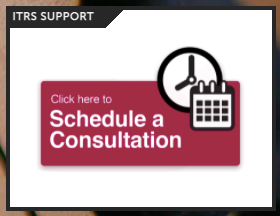Introducing Learning Analytics at Loyola: The ‘How’ and ‘Why’ of Data-Informed Instruction
Data-driven decision-making is becoming increasingly important across many sectors, including education. As an instructor, you might have come across the term “learning analytics.” But what exactly does it entail, and how can it benefit faculty and students? Read on to gain a better understanding of what learning analytics encompasses and how it may boost your instructional efficacy.
What is Learning Analytics?
Learning analytics can be defined as the “collection, analysis, and interpretation of data related to students’ learning and the contexts in which it occurs” (https://www.solaresearch.org/about/what-is-learning-analytics/). This data is typically derived from various sources, including learning management systems (LMS), online course platforms, and student information systems. At Loyola, learning analytics data is currently drawn from LOCUS and Sakai—including several third-party tools integrated with Sakai such as Zoom, Panopto, VoiceThread, and Turnitin.
How Does it Work?
Learning analytics involves the use of advanced technologies and statistical techniques to extract meaningful insights from educational data. These insights can range from understanding student engagement and performance to identifying patterns and trends in learning behavior. At Loyola, faculty can glean insights from the Sakai Statistics tool and the analytics offered by specific teaching and learning tools (e.g., Panopto). They may also use their personalized Learning Analytics Reports to view aggregated instructional data in one location.
Why is it Useful for Faculty?
1. Personalized Learning Experiences:
By leveraging learning analytics, faculty members can gain valuable insights into individual students’ learning needs, preferences, and progress. This allows them to tailor their teaching strategies and interventions to better meet the diverse needs of their students, ultimately fostering a more accessible and personalized learning experience.
2. Early Intervention:
Learning analytics can help faculty identify students who may be at risk of falling behind or struggling academically. By detecting these warning signs early on, instructors can intervene promptly, providing additional support and resources to help students succeed.
3. Data-Informed Decision-Making:
Learning analytics data, in conversation with other metrics such as teaching evaluations, test scores, and final grades, can help faculty make informed decisions about curriculum (re)design, instructional methods, and assessment strategies. This data-driven approach empowers instructors to refine their teaching practices to enhance student learning outcomes.
4. Continuous Improvement:
By analyzing trends and patterns in student data over time, faculty can identify areas for change and improvement in their teaching practices and course design. This iterative cycle of reflection and refinement enables instructors to adapt to the evolving needs of their students and enhance their overall quality of instruction.
Getting Started with Learning Analytics
Learning analytics holds immense potential for faculty in higher education to enhance teaching and learning experiences. Embracing learning analytics can empower faculty and instructional support staff to create more effective and engaging learning environments that support the success of all students.
To learn more about learning analytics at Loyola, visit our website (https://www.luc.edu/its/itrs/learninganalytics/). Faculty are invited to schedule a consultation with an ITRS Learning Design Engineer, who will provide access to the Learning Analytics Report as well as guidance in interpreting the report data and deriving actionable insights.


